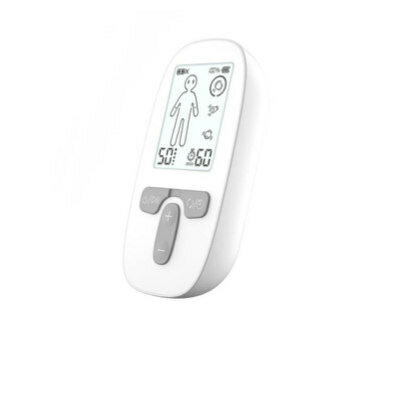Reduction Guide Preserves Medial Column Function
|
By HospiMedica International staff writers Posted on 17 Oct 2019 |
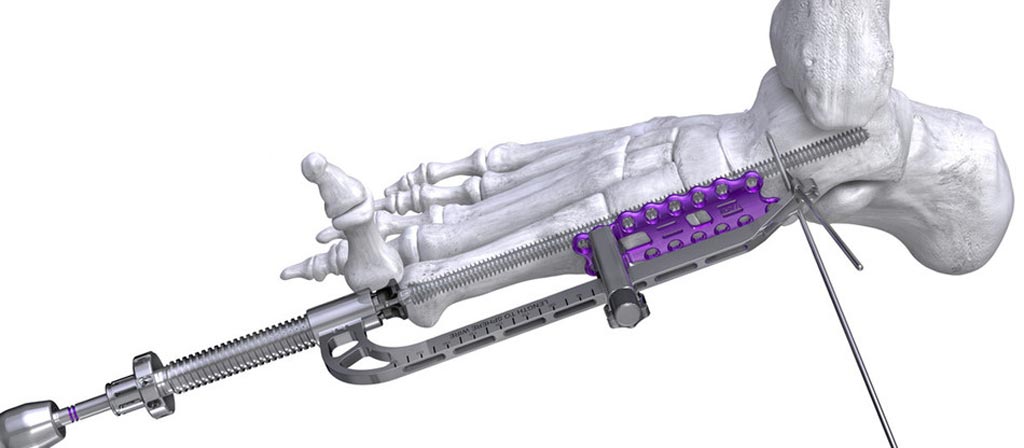
Image: The Joust Beaming Screw System and PRECISION Reduction Guide (Photo courtesy of Paragon 28).
An innovative reduction guide allows surgeons to place a beam precisely while maintaining adequate reduction along the medial column.
The Paragon 28 (Englewood, CO, USA) Joust Beaming Screw System includes 5 mm, 5.5 mm, and 7.2 mm, solid and cannulated beams, all fully or partially threaded. The beams are made of type II anodized titanium (Ti-64AI-4V) for improved fatigue strength. All beams have a sharp tip for ease of insertion and are offered headless to minimize prominence. The 5 mm and 5.5 mm beams are offered in 50-120 mm for varying patient anatomies and to allow for increased bone capture. The 7.2 mm beams are available in 65-185 mm in length to allow surgeons to extend a medial column beam into the posterior aspect of the talus.
The system offers partially threaded and fully threaded options to allow for compression or increased thread purchase, depending on the surgical requirements and patient anatomy. The Joust Beaming Screw System also includes the PRECISION Reduction Guide, which helps position the K–wire from the head of the first metatarsal to the talus, thus allowing a 2 mm thick Gorilla straddle plate to set the trajectory for a beam to pass through, without the hitting any on-axis plate screws and allowing reduced interoperative fluoroscopy time.
Bone plating is a method of fracture fixation in which one or more metal plates are applied across the fracture and anchored, usually by screws, into the fragments; the broken bones must first be surgically reset into their proper position. The method does have some drawbacks; after initially placing the plate on the break or fracture the bones are compressed together and held under some slight pressure, which helps to speed up the healing process of the bone. Unfortunately, the tension provided by the steel plate is lost after several days and the break or fracture is no longer under compression, slowing the healing process.
Related Links:
Paragon 28
The Paragon 28 (Englewood, CO, USA) Joust Beaming Screw System includes 5 mm, 5.5 mm, and 7.2 mm, solid and cannulated beams, all fully or partially threaded. The beams are made of type II anodized titanium (Ti-64AI-4V) for improved fatigue strength. All beams have a sharp tip for ease of insertion and are offered headless to minimize prominence. The 5 mm and 5.5 mm beams are offered in 50-120 mm for varying patient anatomies and to allow for increased bone capture. The 7.2 mm beams are available in 65-185 mm in length to allow surgeons to extend a medial column beam into the posterior aspect of the talus.
The system offers partially threaded and fully threaded options to allow for compression or increased thread purchase, depending on the surgical requirements and patient anatomy. The Joust Beaming Screw System also includes the PRECISION Reduction Guide, which helps position the K–wire from the head of the first metatarsal to the talus, thus allowing a 2 mm thick Gorilla straddle plate to set the trajectory for a beam to pass through, without the hitting any on-axis plate screws and allowing reduced interoperative fluoroscopy time.
Bone plating is a method of fracture fixation in which one or more metal plates are applied across the fracture and anchored, usually by screws, into the fragments; the broken bones must first be surgically reset into their proper position. The method does have some drawbacks; after initially placing the plate on the break or fracture the bones are compressed together and held under some slight pressure, which helps to speed up the healing process of the bone. Unfortunately, the tension provided by the steel plate is lost after several days and the break or fracture is no longer under compression, slowing the healing process.
Related Links:
Paragon 28
Latest Surgical Techniques News
- NIR Light Enables Powering and Communicating with Implantable Medical Devices
- Simple Bypass Protocol Improves Outcomes in Chronic Cerebral Occlusion
- Implantable Absorbable Sensor Detects Life-Threatening Complications After Intestinal Surgery
- New Study Findings Enable Improved Ventilation During Complex Lung Surgery
- 3D-Printed Blood Vessel Scaffolds Could Transform Heart Bypass Surgeries
- Novel Imaging Technique Helps View Blood Perfusion During Esophageal Surgery
- Minimally Invasive Surgery Proven Safe and Effective for Complex ‘Whipple’ Procedure
- Catheter-Based Procedures Offer Less Invasive Option for Treatment of Valvular Disease
- Laparoscopic Surgery Improves Outcomes for Severe Newborn Liver Disease
- Novel Endoscopy Technique Provides Access to Deep Lung Tumors
- New Study Findings Could Halve Number of Stent Procedures
- Breakthrough Surgical Device Redefines Hip Arthroscopy
- Automated System Enables Real-Time "Molecular Pathology" During Cancer Surgery
- Groundbreaking Procedure Combines New Treatments for Liver Tumors
- Ablation Reduces Stroke Risk Associated with Atrial Fibrillation
- Optical Tracking Method Identifies Target Areas in Robot-Assisted Neurosurgery
Channels
Critical Care
view channel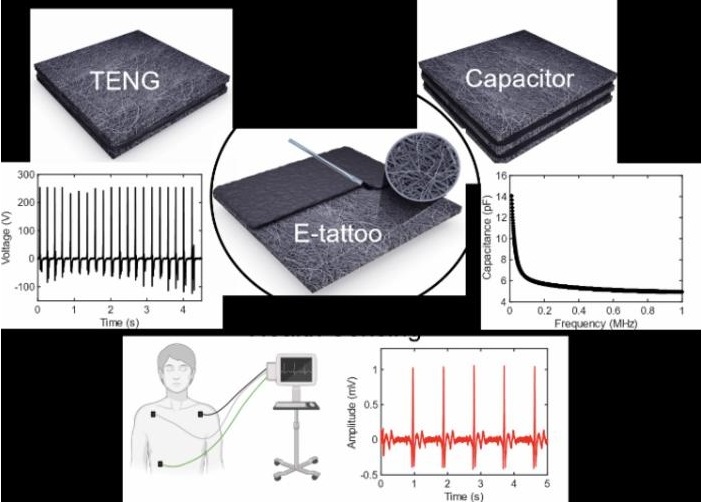
E-Tattoos Harvest Energy and Monitor Health in Real Time
Wearable health devices are increasingly used for continuous monitoring, but many rely on rigid components, external gels, or frequent battery charging, limiting comfort and long-term use.... Read more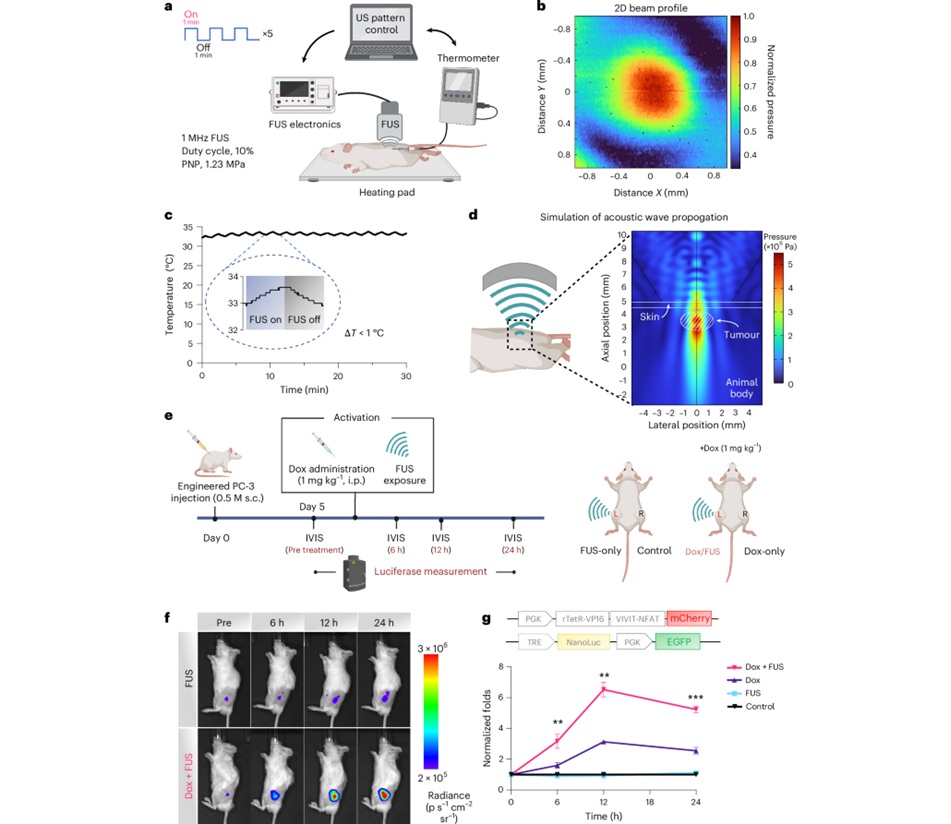
Focused Ultrasound Tricks Tumors into Marking Themselves for Destruction
CAR T-cell therapy has transformed the treatment of blood cancers, but its success against solid tumors has been limited. Solid tumors are difficult to target because they are shielded by surrounding tissue... Read more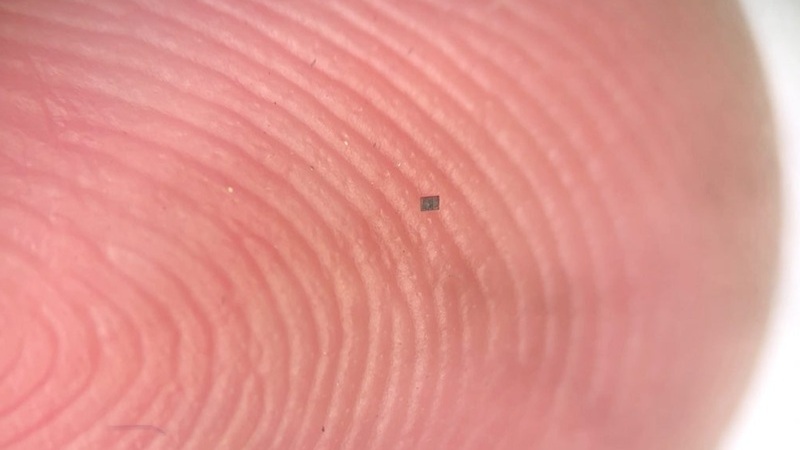
World's Smallest Programmable Robot Opens Up New Possibilities in Medicine
Robots have steadily shrunk over decades, but building machines that can operate autonomously below one millimeter has remained a major challenge. At this scale, traditional movement and control mechanisms... Read more
Remote Ventilate View Platform Enables Real-Time Monitoring of Patient-Ventilator Asynchrony
Patient–ventilator asynchrony is common in severe pneumonia and can worsen outcomes if not identified and corrected early. In routine practice, PVA is often assessed through brief bedside observations,... Read morePatient Care
view channel
Revolutionary Automatic IV-Line Flushing Device to Enhance Infusion Care
More than 80% of in-hospital patients receive intravenous (IV) therapy. Every dose of IV medicine delivered in a small volume (<250 mL) infusion bag should be followed by subsequent flushing to ensure... Read more
VR Training Tool Combats Contamination of Portable Medical Equipment
Healthcare-associated infections (HAIs) impact one in every 31 patients, cause nearly 100,000 deaths each year, and cost USD 28.4 billion in direct medical expenses. Notably, up to 75% of these infections... Read more
Portable Biosensor Platform to Reduce Hospital-Acquired Infections
Approximately 4 million patients in the European Union acquire healthcare-associated infections (HAIs) or nosocomial infections each year, with around 37,000 deaths directly resulting from these infections,... Read moreFirst-Of-Its-Kind Portable Germicidal Light Technology Disinfects High-Touch Clinical Surfaces in Seconds
Reducing healthcare-acquired infections (HAIs) remains a pressing issue within global healthcare systems. In the United States alone, 1.7 million patients contract HAIs annually, leading to approximately... Read moreHealth IT
view channel
EMR-Based Tool Predicts Graft Failure After Kidney Transplant
Kidney transplantation offers patients with end-stage kidney disease longer survival and better quality of life than dialysis, yet graft failure remains a major challenge. Although a successful transplant... Read more
Printable Molecule-Selective Nanoparticles Enable Mass Production of Wearable Biosensors
The future of medicine is likely to focus on the personalization of healthcare—understanding exactly what an individual requires and delivering the appropriate combination of nutrients, metabolites, and... Read moreBusiness
view channel
Philips and Masimo Partner to Advance Patient Monitoring Measurement Technologies
Royal Philips (Amsterdam, Netherlands) and Masimo (Irvine, California, USA) have renewed their multi-year strategic collaboration, combining Philips’ expertise in patient monitoring with Masimo’s noninvasive... Read more
B. Braun Acquires Digital Microsurgery Company True Digital Surgery
The high-end microsurgery market in neurosurgery, spine, and ENT is undergoing a significant transformation. Traditional analog microscopes are giving way to digital exoscopes, which provide improved visualization,... Read more
CMEF 2025 to Promote Holistic and High-Quality Development of Medical and Health Industry
The 92nd China International Medical Equipment Fair (CMEF 2025) Autumn Exhibition is scheduled to be held from September 26 to 29 at the China Import and Export Fair Complex (Canton Fair Complex) in Guangzhou.... Read more









